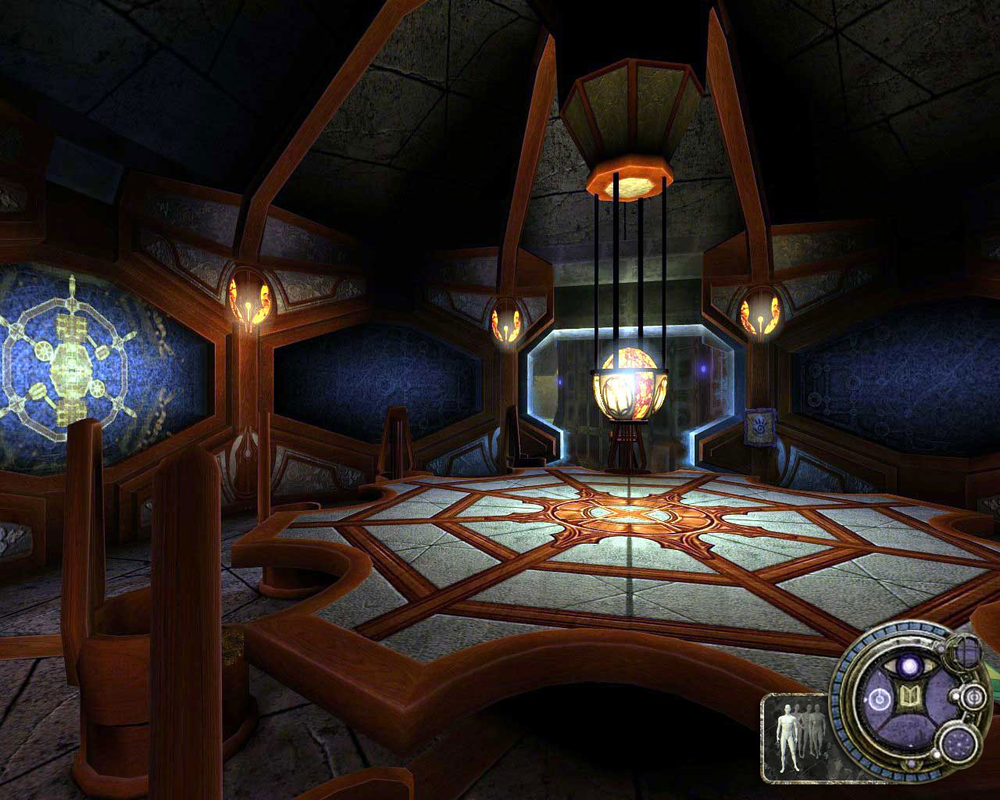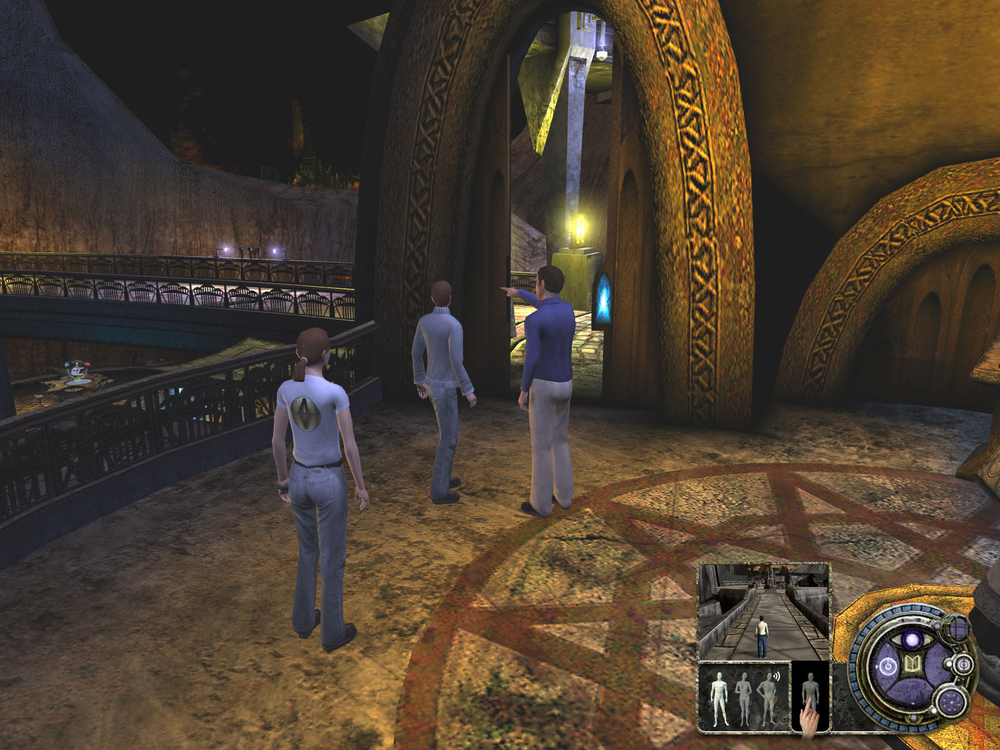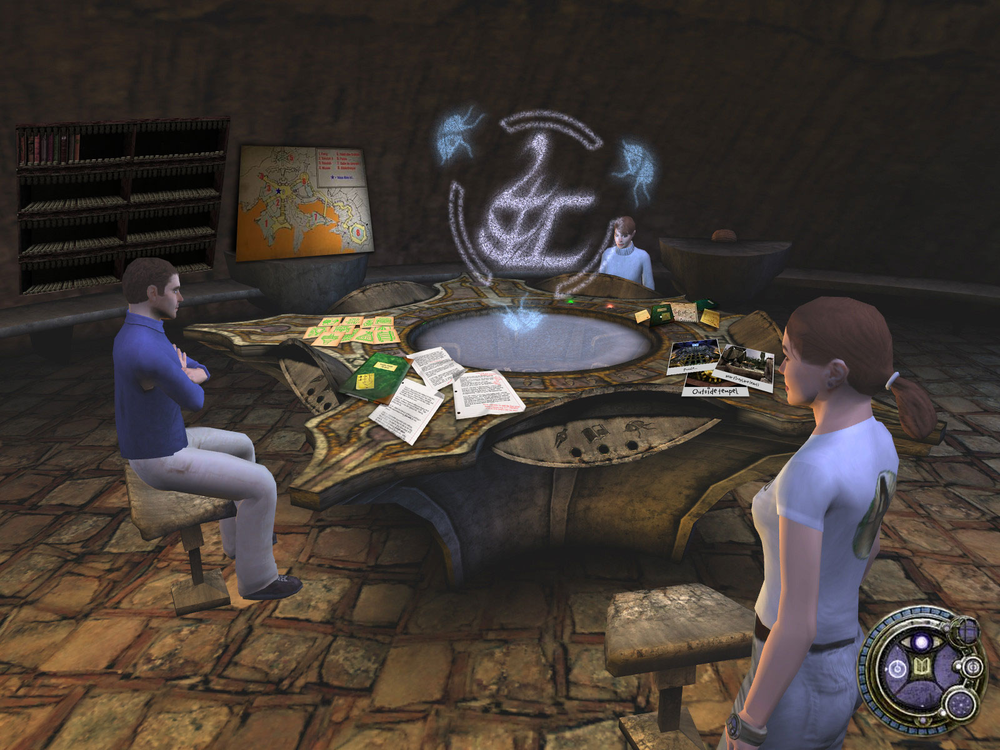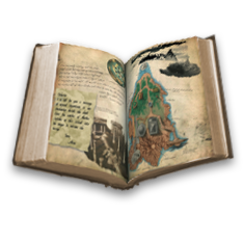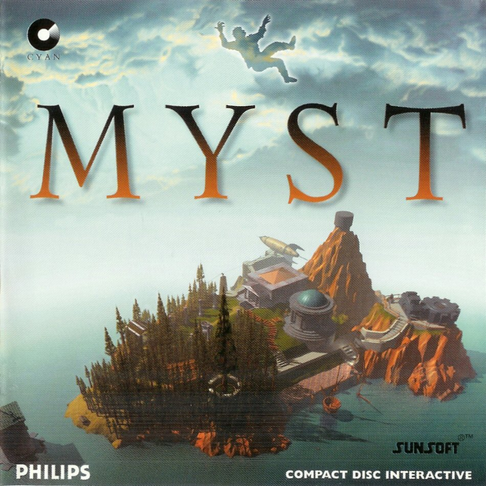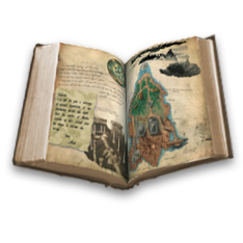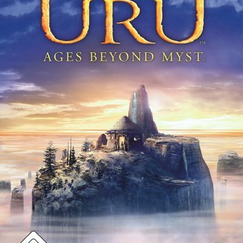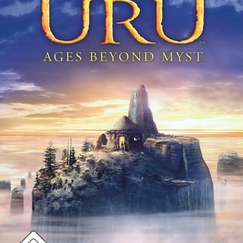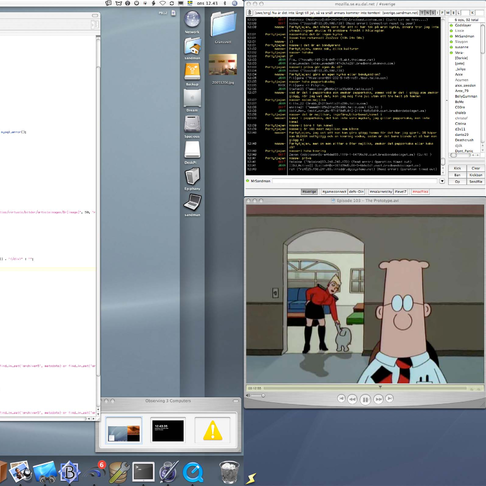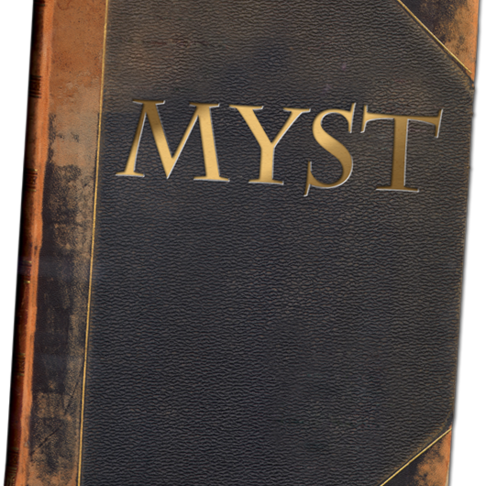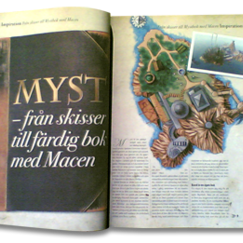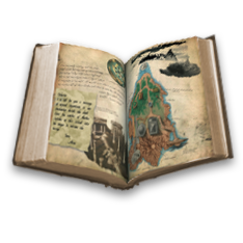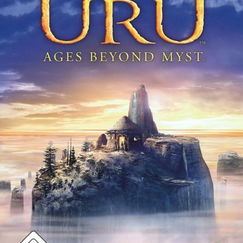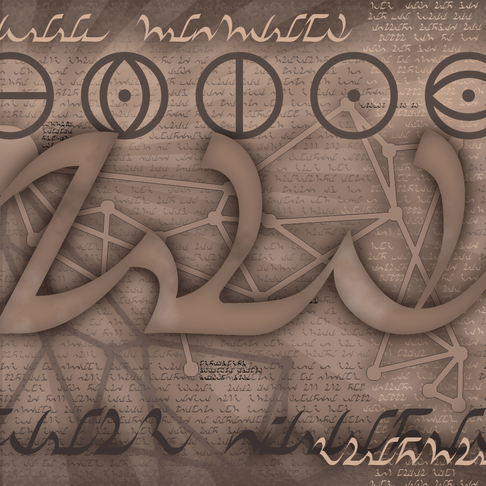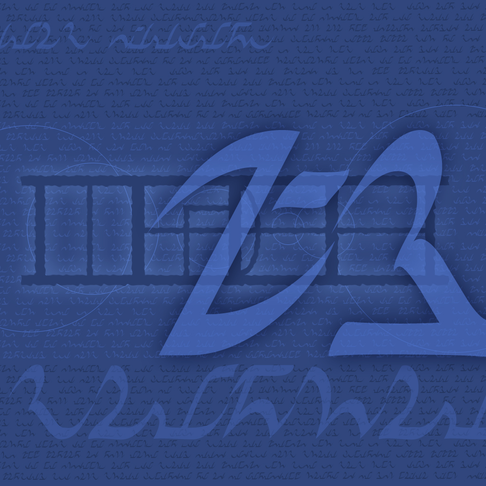I am writing this in English since I plan to send a link to this article to the makers of the Myst series, as a formal suggestion. This is a blog/article that spawned from my posting on usenet that I also mailed to Cyan. It's more like a refinement of the idea and with some screenshots on what it should look like.
For anyone that hasn't played the Myst series, read my blog about completing Myst V (which is in swedish, unfortunately).
But I'm not going to talk about the Myst series. I am going to talk about a project from Cyan named Uru, and about lost possibilities, and maybe hope for future possibilities. Uru: Ages beyond Myst was the game Cyan begun developing after they had completed Riven (yes, Myst III, IV and V weren't made by Cyan, but by Ubisoft ). It was a grand project with lots of possibilites. It was - when announced - one of the first Massive Multiplayer Online Role Playing Game (MMORPG) and it's safe to assume that Cyan probably wanted to be as "bleeding edge" with Uru as they were with Myst when it was released. The idea was that you would walk around with strangers in this huge Myst-inspired world and perform tasks and solve puzzles with other people and Cyan would keep on creating new content for this ever-expanding online world.
). It was a grand project with lots of possibilites. It was - when announced - one of the first Massive Multiplayer Online Role Playing Game (MMORPG) and it's safe to assume that Cyan probably wanted to be as "bleeding edge" with Uru as they were with Myst when it was released. The idea was that you would walk around with strangers in this huge Myst-inspired world and perform tasks and solve puzzles with other people and Cyan would keep on creating new content for this ever-expanding online world.
Unfortunately, developing Uru took a lot of time, and other MMORPG's were released in the meantime which made the online-community aspect of Uru less appealing, if it ever was an appealing aspect of Uru. In the end, too few signed up for the online access to Cyans servers and they had to shut down the entire project just a short time after it was released. Cyan worked on it for some more and released some of the online content as expansion packs.
So, what actually failed? Why didn't people sign up for and enjoyed Myst Online? What made them hesitant of the monthly fee? Well, I have a couple of ideas I'd like to share - and I will use the more successful game series of Myst to compare with. Because Uru was supposed to be the world of Myst as we all know it, and it did a fairly good job at that, but not good enough.
Myst Is Best Played Alone
Or with friends. It's a puzzle solving game and the satisfying part is figuring out the puzzles. Most Myst players don't visit online forums to discuss an on-going game. The trigger is to solve it by themselves, not by cheating. Myst isn't a game where you cheat, really, because you loose all that defines the game, unlike with - for example - FPS games such as Call of Duty, where invulnerability and unlimited ammunition doesn't have to detract from the experience of slaughtering Nazis.
So, Myst games are generally best played alone or with a good friend, or even a couple of friends. The joint excitement of solving a clue or puzzle together with a friend is the height of Myst pleasure, or whatever you may want to call it.
Myst Needs A Story
Those of you that read my Myst V blog knows that I enjoyed Riven the most, because it had the hardest puzzles (and thus the greatest feeling of reward) and by far the best story. During the entire course of the game, you were driven by a motive, an objective. This, however, wasn't present in the first game - Myst. But that was by design. In Myst - you had no idea what so ever what to think of this world you landed in. But Riven couldn't continue on that note, it had to do something. There had to be a reason for you to have come back to Atrus' aid. And there was. And the story that you experienced throughout the game was exciting and enchanting.
A compelling storyline
Some claim I've unfairly portray Uru as lacking a story-line. I can understand where the misunderstanding came from in my wording. I don't really think it lacked a story-line, I think it lacked a compelling story-line, one that really captures the attention and motivation of the player. Riven is a great example of a wonderful story-line that drives the player forwards throughout the entire game. Urus story-line is more about finding out stuff, rather than having an objective.
In Uru, there never was a real story-line. You were visiting the D'ni, the long-lost city in a big cave where the civilization that mastered the Art of writing Ages lived. There the D'ni Restoration Council were making an effort to restore D'ni and the Ages. And since the Uru project was so short-lived, it's unknown if there were plans for a more thought out story to be launched once players got online and settled.
Why URU failed
Some have commented on maybe my guesses about why Uru failed are in error, which may be true. I don't think anyone but Cyan knows exactly why, though.
So, those are two of what I think are the most crucial reasons why Uru failed. But what about the Myst series? Has it been a great success? Well, no. Myst III, IV and V (Exile, Revelations and End of Ages respectively) were all pale when compared to Myst and Riven. I think this is due to two main reasons
No One Can Make Myst Like Cyan
Myst and Riven are true works of art. The D'ni number scheme and alphabet in Riven alone signals the amount of time Cyan has spent building the underlying world of D'ni and Myst. The lack of such detail is apparent in the sequels and they suffer from it. That's not to say that they are bad, but they lack the former glory of Myst and Riven that can only come from the genius of the Miller brothers.
They End
Yes, regardless of how "slow" you play the Myst games to explore every nook and cranny, they will eventually end and the credits will roll. We all know it will happen and we all fear it because that will spell the end of our trip to imagination.
They Require Dedicated Time
This isn't a problem for everyone, but I find that I have a hard time finding time out of my busy everyday life to sit down and play Myst games for a couple of hours, which really is the amount of time it need to be played in a session, if you're even going to split it up at all in several game-play sessions. Again, this isn't Call of Duty where you can shoot some Nazis, paus for supper, then shoot some more. Myst requires that you more or less focus on the game for a couple of hours at a time - mostly being stuck at a specific puzzle and going mad because you can't seem to solve it. And if you're like me and play with a specific friend, trying to schedule Myst sessions is really hard. We actually tried playing on or own computers and doing voice chat over MSN to play at the same time with varying results.
The Solution
So, what's the solution to all of this? Well, what conclusions have we reached? Myst ends, Uru does not. Myst has story, Uru does not. Myst is played alone or with friends, Uru is not. Myst requires - if you play with a friend - that you take the time to travel to that friend and play, Uru does not. Be sure to click the images below to see a larger version and some explanation
Uru ReLive
Well, isn't it obvious? Instead of Cyan wasting money on an online service where their success is directly bound to the number of subscribers they can attract, Uru should be a game I install on my computer, and then host a server for my friends. Instead of joining a specific server and look for your friends, you play your games just like you would your normal Myst game, but you can invite your friends to join you! Let's say that me and my friend Sara and her husband wants to play this new Uru. We all buy a copy and install it. I start the game and begin in my Relto age (which, for those of you that don't know what it is, is a personal "world"). Inside this Relto I can invite friends. All of us are registered on a Cyan site and have a online profile but we don't play on Cyans servers. We play on my server.
Sara sees my invitation in her Relto as a book with my symbol on it and she puts her hand on it and thus joins my server. This means that we both end up in my Relto, which - again - is hosted on my server, not Cyans.
Voice Chat
Well, obviously, this is crucial. Every player on the server is always on an open voice channel to all the others (or press-to-chat). Discussing the environment, puzzles and ideas are crucial to Myst so voice chat is a necessity.
Game-Play Modes
A third play mode
Some have commented and said that there should be three play modes for "Uru ReLive". Single play, Cooperative play and Live play, where Single play is the ordinary Myst way, Cooperative is the mode I've been focusing mostly on in my article and Live play being the Uru Live way. I'm all for that, actually, and I think it could be accomplished in one and the same game, just as long as Cyan can afford sto support it.
The idea behind Uru was that we are all individuals in this world and we can explore it at our own pace. The Myst games, on the other hand, are all in first person mode and it is always "you" that's playing and no one else. I think people like this better than having to keep up with a group or trying to manage several players "characters" in-game.
Master Mode

So the first mode is the Master Mode, in which a player in the game is chosen to be the Master. This means that whatever is seen on the Master's screen is also shown on the others screens. This is great for transporting between areas or just to keep talking and discussing clues while the game-play continues. One player is doing all the working and the others just tag along and discuss things, just like you would play Myst or Riven with friends. This mode can be played in both third and first person perspective of course, and regardless of which, what the Master sees, the client sees. The position as Game Master can be moved to another player at any time.
Individual Mode
The Master can release his control of the clients screens and they will be spawned (all of them or just selected ones) as individual characters around the Master and they get individual control of their characters. In this mode, they can do just about anything they want, but the purpose is not for them to go around exploring for themselves as in Uru, but rather as a way to solve some puzzles that may not require several characters, but might be easier with them. Remember, Uru "ReLive" is supposed to be able to be played offline in single mode as well.
In individual mode any character can "Zip" to the group at any time if they go astray or get trapped behind a one-way door or something. The group is the important thing in the game and a good linking book gets you to the group at all times. Likewise, the Master can summon every character to him/her at will or at request.
In individual mode any character can "Zip" to the group at any time if they go astray or get trapped behind a one-way door or something. The group is the important thing in the game and a good linking book gets you to the group at all times. Likewise, the Master can summon every character to him/her at will or at request.

Imagine that four players is playing in Master Mode. They come to a large door. One says that there was a lever back in the hallway that looked like it could be connected to this door. Instead of the Master going back and leaving the door, he can release a player into individual mode and he/she can go to the lever and try it out, while the other three players are still at the door. If it works, the Master just summons the player back into Master Mode and they go through the door. This is a variation of the Zip Mode in the earlier Myst games which made it easier to "zip" to areas where you have been before without having to walk/click the distance.
Relto Mode
At any given time, any player can link back to the Relto on the server. This is the place where all notes, camera snapshots, clues and books that are found are kept (i.e. none are left behind on the table it was found on, as in earlier Myst games). This is a great place to discuss things and look at clues that have been found. Imagine that all players are gathered around a table inside the Relto, sitting down. Here they can look at notes and clues that have been found, and their in-game character interact with the notes on the table so that all can see which one is being discussed at the moment.
Any player can link here, regardless if the others are here or not. The ongoing game will be kept in a smaller window in the screen corner. Imagine the person in Relto talking in voice chat with the other players that are at the door, discussing the markings they found on a wall and took a picture of. The other players are still in-game but can talk with the one in Relto, which also sees what they see and can describe symbols to help them out. This is a good example of the cooperative strengths of Uru ReLive.
Updates
Just as in Uru, Uru ReLive would have new content added all the time by Cyan. All of it would be handled in-game in Relto. New Ages and keys would appear translucent in the bookshelf and when clicked would be downloaded and paid for by the server owner. This would be without any menus or anything like that. The server would buy a license, and the downloaded data would be downloaded to all of the clients connected to the server - but they would only have an online license for the new content and can only play it on the server on which it was donwloaded - if they want to host a server or play offline, they need to purchase the content themselves.
So, new Ages, places, rooms or whatever, might be available once a month, and cost something around $13 (100 kronor). This would be pretty much the same amount of money that Uru Live would have cost each month anyway, but now Cyan only have to pay for the ongoing development, not the servers and bandwidth.
But small ages and lesser puzzles aren't very exciting, so each six months, a huge new world should be released which would also contain all the smaller ones in the interim. It could be more expensive, like $60 (470 kronor) for those who didn't buy the smaller updates and just another $10 for those who have bought them. This would mean that those that don't want to shell out $10 every month (i.e. those that didn't subscribe to Uru Live) can still get new massive content each six month for the price of an ordinary Myst game.
Plus, Cyan would be so smart that the huge Age would need clues from the smaller Ages that were released to be able to solve it, so they aren't all disconnected worlds, they are just expansions to the world we've been in for the last six months anyway.
Story, What About The Story?
Yes, we need a good story that can keep going forever and forever. We need something that is constantly driving us forward and keeps us on track. I think it should be connected to D'ni and its survival or future. There also needs to be a logical reason why new books arrive which we can "buy" in the game. Who are putting them there? Who is giving them to us? I think Atrus should be a part of the game, and be the voice behind our motives for helping. We need to see places like Myst Island and Riven in new glorious live 3D to feel the connection to the Saga. We need to feel the presence of Achenar and Sirrus in some ages and puzzles (much like we did in Myst III).
Interconnection details are a fun part too, like the Whark skeleton in Uru or the Ki readers in End of Ages. We need to constantly feel like we're in Myst, and that the world has been created like a puzzle for a reason.
End Of Idea
Well, there's not much more I can say really. I've been thinking about this quite a lot lately and just wanted to write it all down. All my blogs are in swedish, but I choose to make this in English since I plan to mail Cyan and tell them to read it and secretly hope that it will somehow give them ideas they haven't thought of. Good online cooperative games are very rare these days, but they are so very fun. And Myst is such a good place to build such a concept on. If anyone from Cyan reads this - Cheers!




